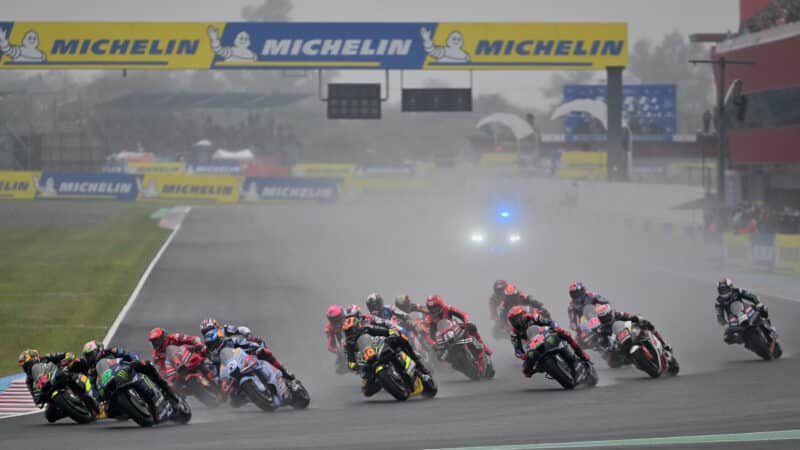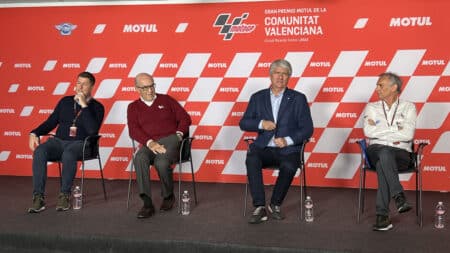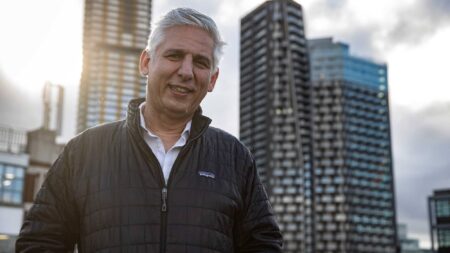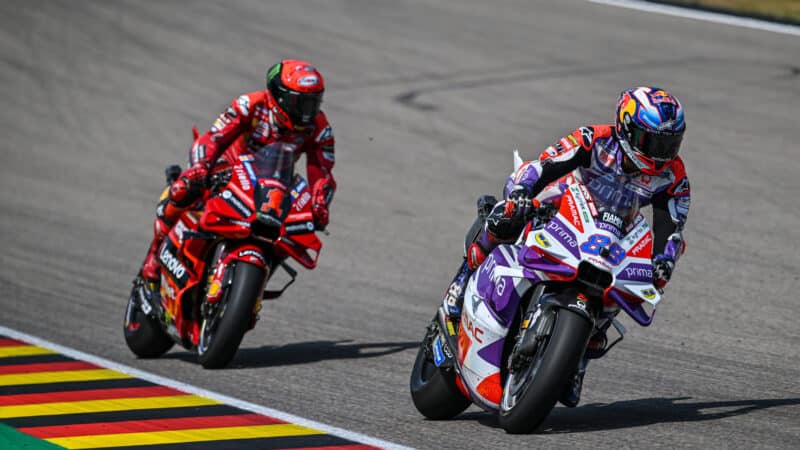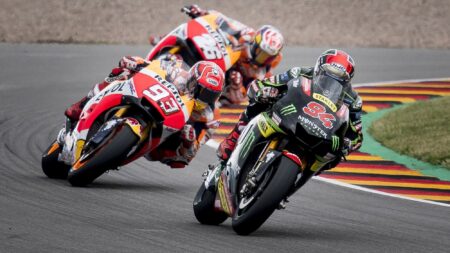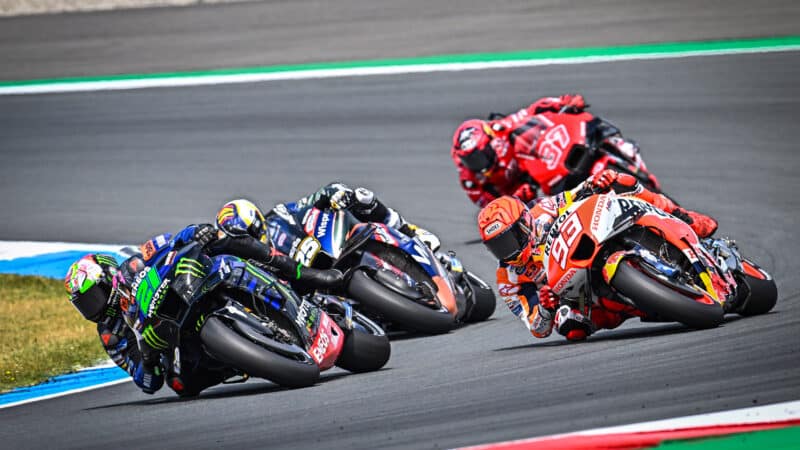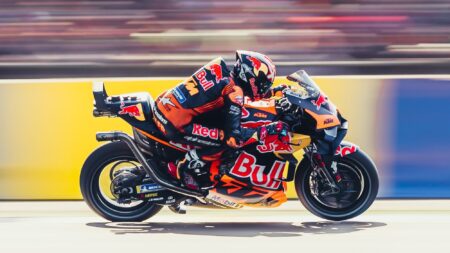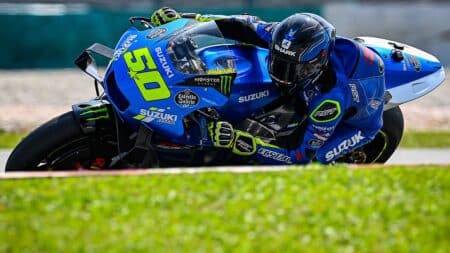What follows is a somewhat strange interview, in fact it’s less of an interview and more of a philosophical discussion about racing, but this is my fault.
I tell Cecchinelli and Ezpeleta that I’m not going to ask questions, but instead offer a few of my concerns about where MotoGP is going and then leave them to answer them.
I have a few notes scribbled in my notebook, including this one: seven races into the 2023 season and there’s not been a single overtake for the lead in the last ten laps of any race. (Two days later MotoGP 2023 got its first winning overtakes in the last ten laps.)
This obviously isn’t good for the show, on which everyone in MotoGP exists, because if there’s no show, there’s no money and if there’s no money there’s no championship.
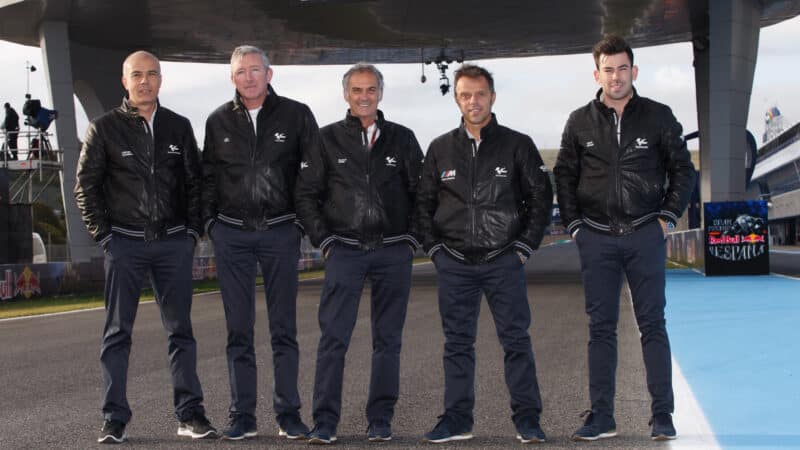
Cecchinelli (far left) and Ezpeleta (far right), with (from centre left) Race Director Mike Webb, Safety Officer Franco Uncini (who retired last year) and former Riders’ Representative Loris Capirossi
Dorna
I blame the usual suspects: the proliferation of downforce aero, ride-height devices and so on.
Formula 1 deals with such issues by tweaking its rulebook at the end of each season to ban new technologies that may hurt the show or increase costs.
For example, Mercedes won the 2014 F1 title using a hydraulic ride-height regulator (basically a 2000-part hydraulic computer). Mercedes was allowed to keep this tech for the entire season – well done guys, clever job etc – but at the end of the year F1 banned ride-height regulators, for cost reasons.
This same technology arrived in MotoGP a few years ago – when Ducati introduced its ride-height device (designed by German engineer Robin Tuluie, who also created the Mercedes system) – and is still there, despite misgivings from many quarters. Why?
“Fortunately and unfortunately MotoGP isn’t a dictatorship”
One of the main differences between the two championships is that MotoGP manufacturers have greater control of the technical rules than F1 constructors have over theirs.
The current system was established in 1992, when Dorna bought motorcycling’s grand prix world championships from Bernie Ecclestone’s Two Wheel Promotions company, after Ecclestone had given up his dream of owning both F1 and bikes. The technical rules are negotiated every five years by Dorna, teams association IRTA and the MSMA, the manufacturers’ association. The MSMA has power of veto over the rules, but only via unanimous vote.
The idea behind giving this power to the manufacturers was to give them a stake in the series, otherwise why would they want to invest hundreds of millions in GP racing?
In fact Dorna has tried to do something about some of these new technologies. Last year it put two options to the MSMA: ban all ride-height devices from 2025 or ban front devices from this year.
“They all voted for option B,” says Ezpeleta. “What we want to do with the rules and what we can do are two different things, like everything in life.
“Fortunately and unfortunately MotoGP isn’t a dictatorship, so we have to see what the industry wants. As much as we’d like to implement changes in the regulations, by closing some doors or whatever, that’s still changing the rules.”
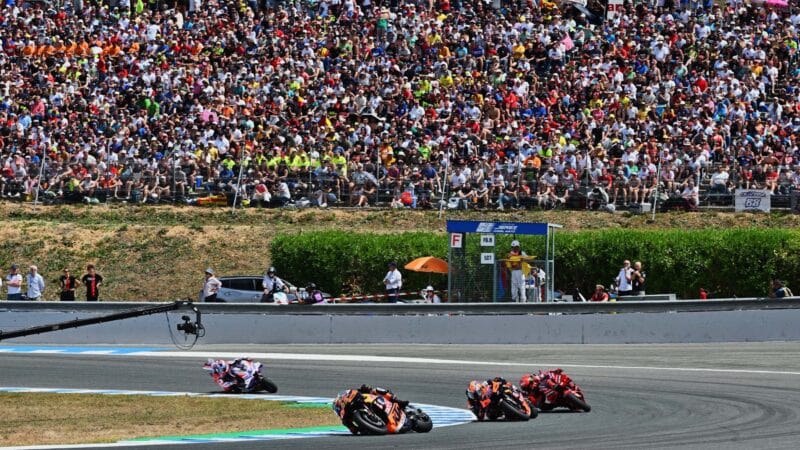
April’s Spanish GP at Jerez provided one of this year’s better MotoGP races, although Pecco Bagnaia had it won by half-distance
KTM
“And we only started the current five-year rules term last year! Wings already existed when we negotiated the current rules and ride-height devices already existed on some bikes, but no one came to me and said, ‘We’ll only sign our participation agreement if you get rid of this and this’.”
“The biggest thing the manufacturers request when they sign their participation agreements is that the regulations stay the same during those five years,” adds Cecchinelli. “They don’t want us to continually to adjust things. The reason F1 changes things every year is because they can afford it…
“Continually changing the rules doesn’t limit costs, it increases costs. Also, you may end up with the opposite of what you’re trying to achieve, because, for example, when you do something to control the performance of the fastest factories, you may damage the slower factories because they’re working to catch up and you destroy their work.
